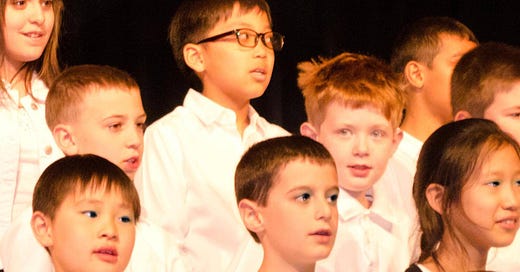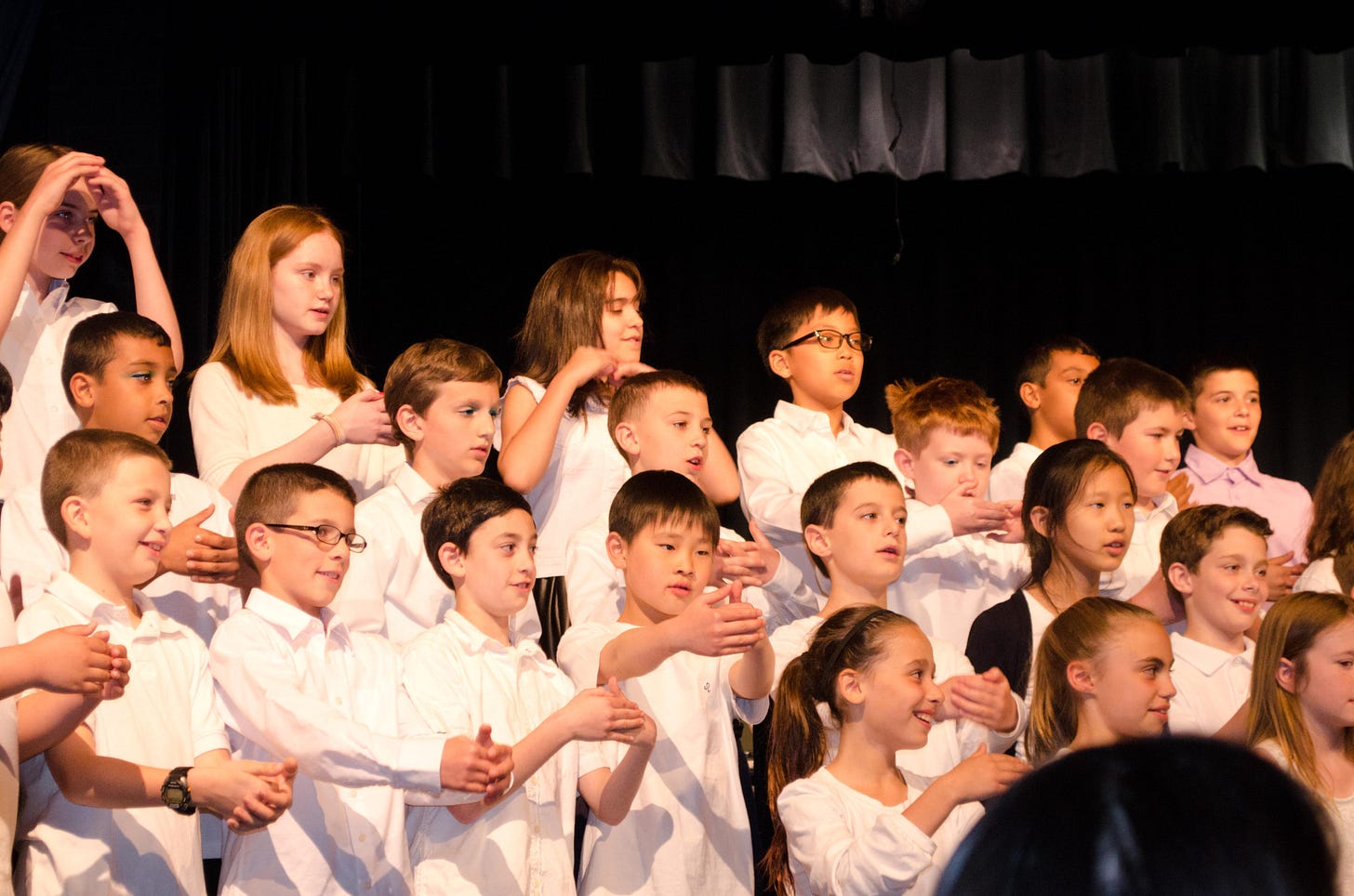Compared to other disabilities, autism is a newborn baby. Leo Kanner, a Baltimore-based child psychiatrist first studied the condition in the 1940s, but it was only in the 1980s that the scientistic community really began recognizing the scope and the range of this condition. (For more autism history, check out Steve Silberman’s book, “NeuroTribes.”)
Although we are only just beginning to understand autism, the condition itself has probably be around forever. Some speculate that the autistic traits of early humans led them to the develop tools and draw cave pictures. Temple Grandin once speculated, “What would happen if the autism gene was eliminated from the gene pool? You would have a bunch of people standing around in a cave, chatting and socializing and not getting anything done.”
The past forty years has seen a huge growth in our understanding of autism. Yet, the autism community, which includes people with autism, caretakers, scientists, therapists, activists, and teachers, is extremely divided. While a certain amount of debate and disagreement is healthy and productive in politics and science, an extreme faction in this group has arisen that poses a significant danger to the larger community.
My first sentence in this newsletter identifies autism as a disability. That is actually a controversial statement today. Some would say that autism is not a disability, but simply a neurological difference. Others would even say that it’s a super-ability.
It’s extremely difficult to advocate for autistic people, if we can’t even decide if it’s a disability. A disability is a condition that makes it difficult for one to function in the wider world. If you can’t drive a car, walk without assistance, hold a job, or understand currency, then you are disabled. If one has a disability, then one can get support from government. Government and schools don’t typically give extra help to people who say that they have a superior form of cognition.
In truth, autistic people are really different from each other. It’s safe to say that most people with autism have issues — sensory, behavioral, social, and/or cognitive — that prevent them from blending into the mainstream world effortlessly. While some autistic folks have slight problems and great gifts and, thus, dominate the physics and engineering departments of the world’s finest universities, others require 24/7 professional care.
It’s tricky to decide which group should be the face of autism — the physics professor, the gamer geek who can’t leave the house, or the nonverbal kid who self harms and never sleeps. Each group has its own interests and needs. But by focusing on the commonalities of the disabilities, then more people can get the help they need, whether it’s at a university, a multi-national computer company, or a group home.
On the extreme end of this debate, some advocates oppose any form of autistic therapy, comparing autism therapy to gay conversion therapy — an act of violence to the autistic identity and rights. If autistic people wants to “stim” - flap their hands or make unusual utterances, for example — they should. We shouldn’t train them out of behaviors that make them happy or control anxiety.
The most common form of therapy for autism is Applied Behavior Analysis (ABA). In an nutshell, ABA uses sticks and carrots to redirect kids with autism. It’s the old “star on the chart” method that parents use to train their toddlers, just amped up to 11. The behaviorist targets an autistic behavior, like hand flapping, nose picking, or verbal tic, by monitoring how many times those actions happen, figuring out the triggers, and offering inducements or punishments to stop those behaviors. Everything is calculated and graphed.
Studies show that intensive ABA (25-40 hours per week) at a young age improves outcomes for some people with autism. However, some think that ABA doesn’t work and damages kids. Imagine having an adult in your face for forty hours a week making you do stuff that you really don’t want to do. It would suck, right?
My kid never had ABA as a toddler, because he didn’t get a diagnosis until he was five and never “stimmed.” In elementary school, he only had a light version of ABA, so I don’t have strong opinions on this particular form of therapy. I believe that ABA is successful because of its time intensive; I’m sure that other therapies that involve lengthy adult interactions are equally effective. Therapists tell me that ABA makes the kids a little robotic and takes away their agency, but that this method can be easily taught to an army of special education teachers, so it’s very practical.
While I’m not an ABA advocate, I am a therapy advocate. I strongly believe that brains improve with the right exercise. I strongly believe that autistic kids should receive intensive help at an early age, and that all efforts should be made to improve their quality of life in the world as it exists today and not in some mythical world.
While it would be really nice if autistic people could do whatever they wanted, schools cannot allow students to run up and down the hallway. They cannot allow a student, who is frustrated by his lack of comprehension of biology lesson, to punch a teacher in the stomach. No supermarket will employ a worker who paces back and forth in the meat section scripting scenes from “The Lion King.” We can’t ignore the fact that people with autism have some rough edges and do not blend well into the mainstream world. While we can teach the mainstream world about autistic behaviors and to tolerate those behaviors in certain settings, it is simply a fantasy to believe that the world will become an autistic free-for-all. Nobody can do whatever they like, not even autistic people.
Back in the late 1990s, Andrew Wakefield, a British physician wrote an article making a link between the MMR vaccine and autism. It took years to undo the damage behind that much discredited article. He took a group of grief-stricken parents and turned them into an army of anti-vaxxers. Today’s Wakefield equivalent is the woke autistic movement that does not acknowledge the limitations of autism, tries to undermine the existing systems for helping children with autism, and has unrealistic expectations for inclusion and acceptance of autistic behaviors.
Picture: Ian in his third grade chorus show. While he’ll always be a bit different from other kids (looking in a different direction in the first picture), he can also blend in when necessary (second picture). I think that’s the autism sweet spot.
LINKS
I blogged my latest installment on the Royal Family DRAMA.
June was a terrible month for blogging or surfing or any quasi-work. If I wasn’t getting a paycheck for a task, then I just couldn’t do it.
If I didn’t have a pressing work task, I was unearthing boys’ dusty dinner jackets, taking the jackets to the dry cleaners, sending in checks for the high school yearbook, locating the guest pillows and sheets for the daybed in the office, organizing a family dinner at fancy restaurant in honor of Ian, planning dinner menus for guests, helping Jonah pack for a trip to Alaska, filling out paperwork for Ian’s jobs program, driving him to the school for more evaluations, buying new light fixtures for the outside of the house, and so on. And that Huff Post article still requires follow up emails and chasing down good opportunities for my book project and for Ian’s future employment. All excellent real life stuff, which I’m privileged to have in my life.
I’m fascinated with Post-COVID luxury spending. The Washington Post has a good article on it, and referred to education spending. I wrote a newsletter post that touched on this topic. Education entrepreneurs are going to do well this year.
I taught college for years and loved it. But all the students wanted to be there. They PAID to be there. I’m not sure that I could teach kids that were being FORCED to be there and hated it. Fun day-in-the-life of a high school teacherby Cafeteria Duty.
I’m in the Emily Oster fan club.
More links on the terrible impact of school closures on children, college students, and families. Public schools saw a drop of 1.5 million students; Pre-K experiences 22 percent decline. They have no idea what to do with kids who missed all that school – flunk them or push them ahead? A staggering drop in college enrollment.
Elite public schools in New York City have lifted generations of poor, immigrant families out of poverty. Now, they’re under attacked by the woke police.
Steve is feeling very proud of himself for his cut-off jean shorts. He’s finally trendy.
This is my old neighborhood in Manhattan.
Watching: The Bad Batch will be the next TV show to watch with the kid, after we finish Loki and Doom Patrol.
Shopping: Bamboo shades for the office windows. Black sandals – Frye and Birks. New running shoes. A good t-shirt, inspired by Doom Patrol. For our anniversary, Steve surprised me with a leather purse with a wide canvas strap from Madewell. I’ve been using it all month.
Eatings and Drinking: At last Saturday’s graduation party for Ian, we came back to our house after a restaurant dinner for coffee, cakes, and a signature cocktail. We had a ready-made cocktail in a mason jar, along with the usual bottles of wine. Steve made Old Fashioned, because that’s his dad’s favorite drink. It was too sweet. Next time, we’re going to try something else. We might try Peter Suderman’s Philadelphia Fish House Punch.
Picture: We’re in the midst of a home renovation. That’s our new front door. On Instagram, I posted pictures of the new windows in the office. New siding next week.





